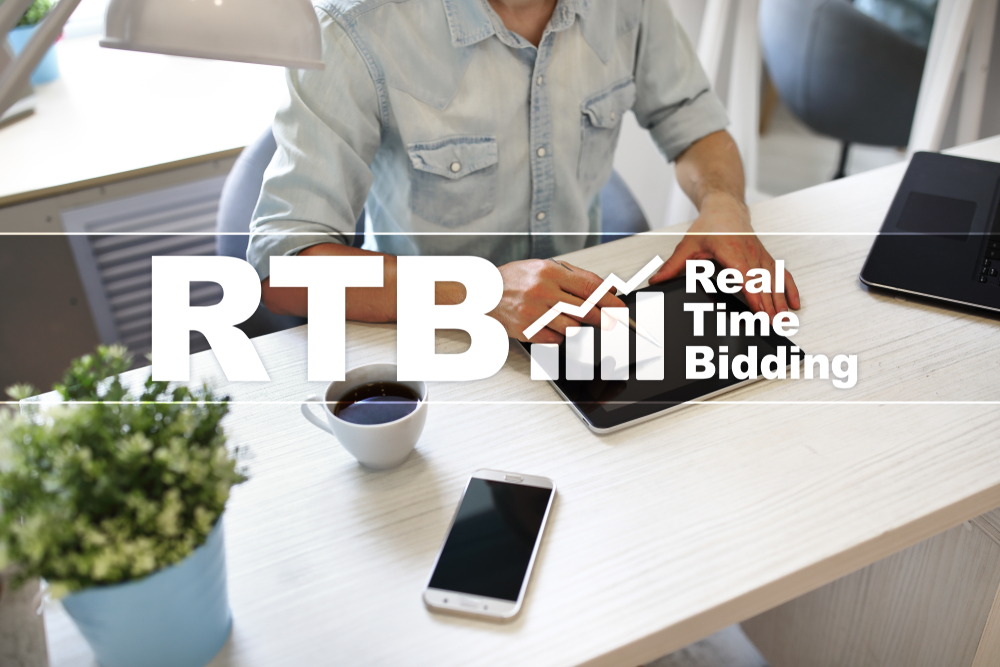RTB Win Rates – Is Bigger Always Better?
Programmatic
Mar 24
Why aren’t our win rates higher?!”
“We need to reach more users; try and get our win rates up!”
As brand advertisers become more savvy in the world of programmatic advertising, with products ranging from display, native, video, and more , conversations like these are becoming more and more common. But do we have a complete understanding of how win rates affect RTB campaigns, especially those focused on prospecting new customers?
What is a win rate?
The “Win Rate” of a campaign or ad group describes the ratio of bids to wins in a particular campaign or ad group. A very “straightforward” metric in the world of RTB, some see this as a litmus test for how ad groups and campaigns are performing: when we bid higher, we win more; when we win more, we reach more potential customers. On the surface it seems simple, but are bigger win rates always better?
In order to unpack this idea, let’s start with a simple RTB scenario:
In this scenario you need to spend $100/day on two audience-targeted prospecting ad groups. For the sake of this test, the ad groups are targeting identical audiences. After running the campaign for ten days, you return to check your ad groups and see the following…
Ad Group A Ad Group B
Spend: $1,000 Spend: $1,000
CPM: $3.00 CPM: $1.10
Win Rate: 2.9% Win Rate: 0.6%
Impressions: 333,333 Impressions: 909,090
As we can see, Ad Group A had a significantly higher win rate, but Ad Group B served nearly 2.75x the impressions. But shouldn’t a higher win rate mean more impressions?!
How does pacing affect my ad groups?
Inside every demand-side platform (DSP) used to buy display inventory is a pacing algorithm. That algorithm determines how a budget is spent over a certain duration of time. Essentially, if you need to spend $100/day an algorithm might attempt to spend roughly $0.07 every minute to pace toward your goal.
Let’s start with a quick assumption: In a behavioral targeting situation, an ad group will see upwards of 10,000 impressions every minute on average.
If Ad Group A won every impression in a given minute at a $3.00 CPM, it would end up spending $30. So, Ad Group A only needs to bid on a fraction of those impressions to spend the $0.07 it needs, which is determined by the campaign’s win rate. With a 2.9% win rate, Ad Group A would need to bid 34 times to win a single impression. And to win the necessary 21 impressions to spend $0.07 per minute, Ad Group A would need to bid on 714 of the 10,000 impressions available each minute. That’s only 7% of impressions available to our DSP.
So, what happens with the other 9,300 impressions? Well, nothing. After the algorithm spends its allotted budget it simply ignores any subsequent available impressions. This leaves out thousands of impressions that could be better or more cost effective for our campaign.
What happens with a lower win rate?
At Ad Group B’s lower CPM of $1.10, it needs to win 63 impressions each minute to pace its budget spend. And at a win rate of 0.6%, it would need to bid on 150 impressions for each win. That means it has to bid on 9,500 impressions each minute to spend its $0.07 budget. That’s 95% of the available impressions, meaning the DSP ignores only a fraction of available impressions.
When a DSP has the opportunity to view and bid on nearly every impression it sees, it finds hidden gems of available inventory. This allows CPMs to drop as you buy less expensive impressions. As CPMs go down, impressions increase, and your campaign ends up serving significantly more impressions.
How is that even possible?
The reason logic runs backwards in win rates is based on how the metric is calculated. As we covered at the beginning of this piece, win rate is calculated by the ratio of bids to wins. But as shown in the figure below, Ad Group B bid on 1,330% more impressions than Ad Group A. So even with a smaller win rate, it wins dramatically more impressions.
Ad Group A Ad Group B
Impressions Served: 333,333 Impressions Served: 909,090
Available Impressions: 144,000,000 Available Impressions: 144,000,000
Impressions Bid On (%): 7.14% Impressions Bid On (%): 95.00%
Impressions Bid On:10,281,600 Impressions Bid On: 136,800,000
To make it more clear, let’s calculate win rate a little differently. Instead of a ratio of bids to wins, let’s calculate it as a ratio of available impressions to wins. If each ad group has 10,000 available impressions each minute, then there would be 144 million impressions available over the course of 10 days. Now if we divide the impressions we won by the total available, we have the “actual” win rate of each ad group. And as you can see below, Ad Group B wins by a mile.
Ad Group A Ad Group B
CPM: $3.00 CPM: $1.10
Impressions Served: 333,333 Impressions Served: 909,090
Available Impressions:144,000,000 Available Impressions: 144,000,000
Actual Win Rate (%): 0.23% Actual Win Rate (%): 0.63%
When should my win rates be higher?
Like all good rules, there are plenty of exceptions to this scenario. However, two stand out as important to remember.
Our first exception is a retargeting ad group. Unlike the prospecting ad groups we used before, RT ad groups tend to contain much smaller audiences who have shown specific interest in your product or brand. Because of these two factors we would want to increase our win rates and frequencies, hitting these users as early and as often as possible to move them down the purchase funnel. This will naturally raise CPMs, but we expect these ad groups to result in higher rates of conversion, thus delivering lower CPAs. So, higher win rates in retargeting ad groups will drive better ROI, because the audiences are small and have shown intent or direct interest in your product.
The second exception to this rule is in branding objective campaigns. Unlike most campaign run in RTB, which focus on direct events on the advertiser’s website, branding campaigns focus on delivering a message or increasing brand awareness with a user. These campaigns are common for political messages or newer brands seeking to increase market share. In order to deliver a message that users remember and hold on to, a campaign needs to deliver between 7 and 21 impressions within a
7-day timeframe. That means audiences need to be highly-targeted (smaller) and frequencies need to increase. Again, these two factors increase CPMs, which increase win rates. But just as in retargeting, these increases are acceptable and welcomed because they are delivering the desired result, where lower win rates would fail to deliver the large frequency in the timeframe needed.
So what does this tell us?
Win rates are a deeper and more complex metric than most RTB professionals give it credit for, and the effects of algorithms and machine learning in today’s DSPs ensure that they contain layers we’re still exploring. Even though it appears a simple stat by which to judge our campaigns, it can mean so much more if we look closer.
However, an analysis of prospecting ad groups, specifically those in conversion based campaigns, shows us that lower win rates can actually deliver better results in a great many of our campaigns. They do so by increasing delivered impressions and increasing unique users reached, which increases the “actual” win rate of your ad groups. For advertisers spending budget on prospecting in conversion based campaigns, lowering your win rates will help you make the most of your RTB dollars.
By: Andrew Ransom






